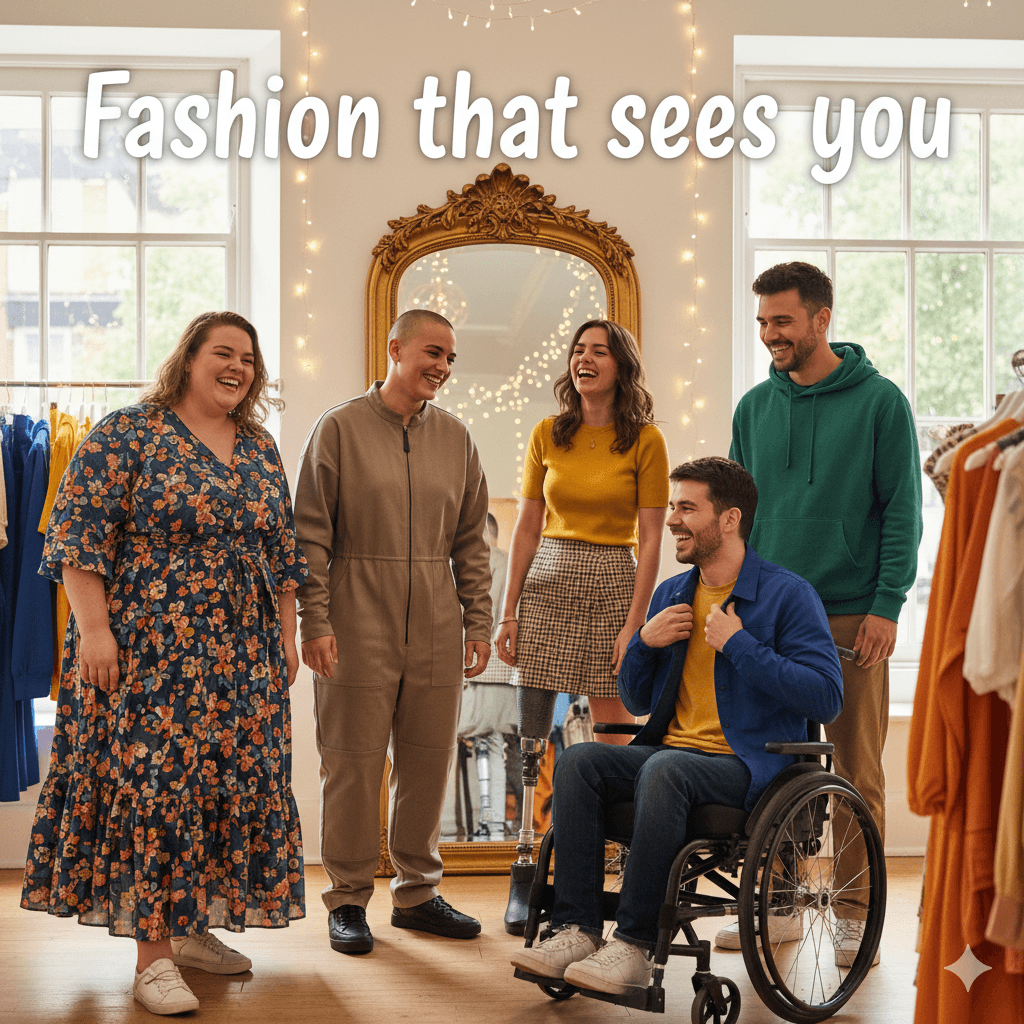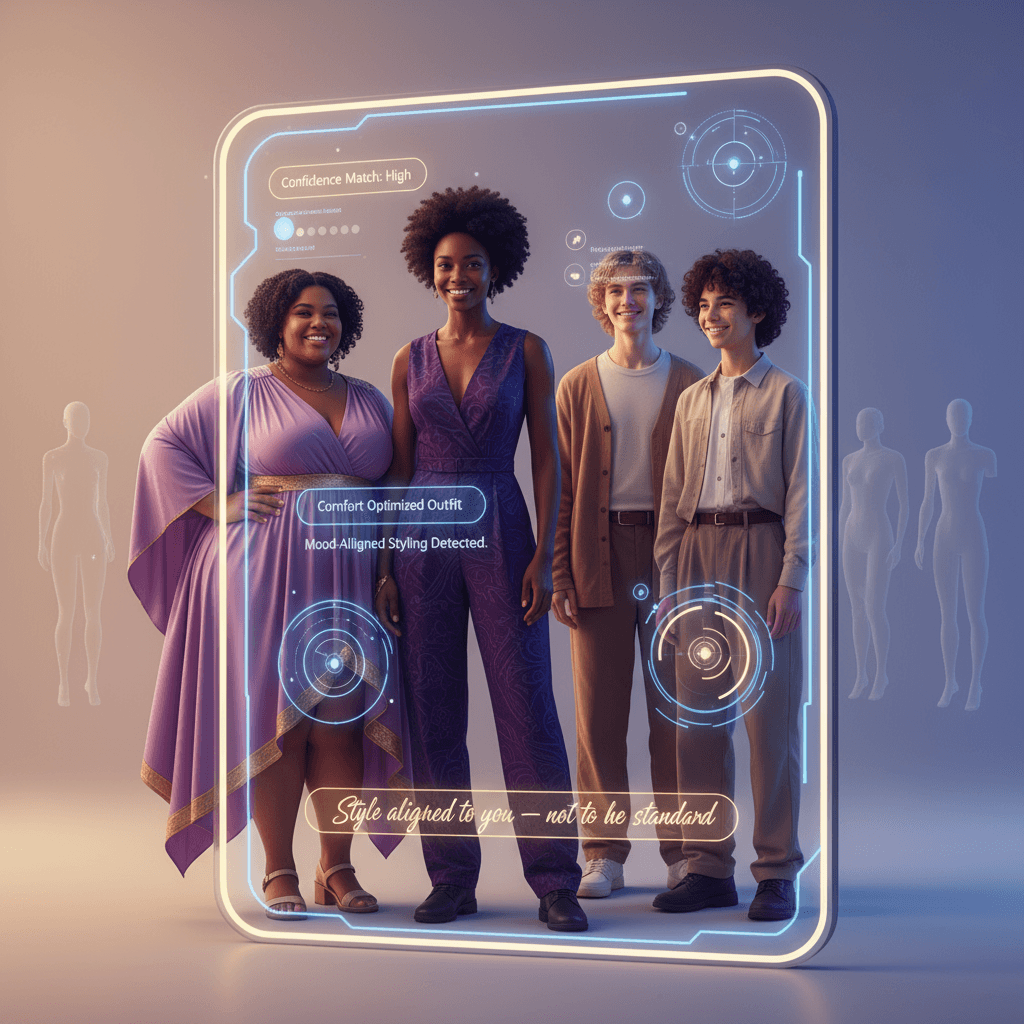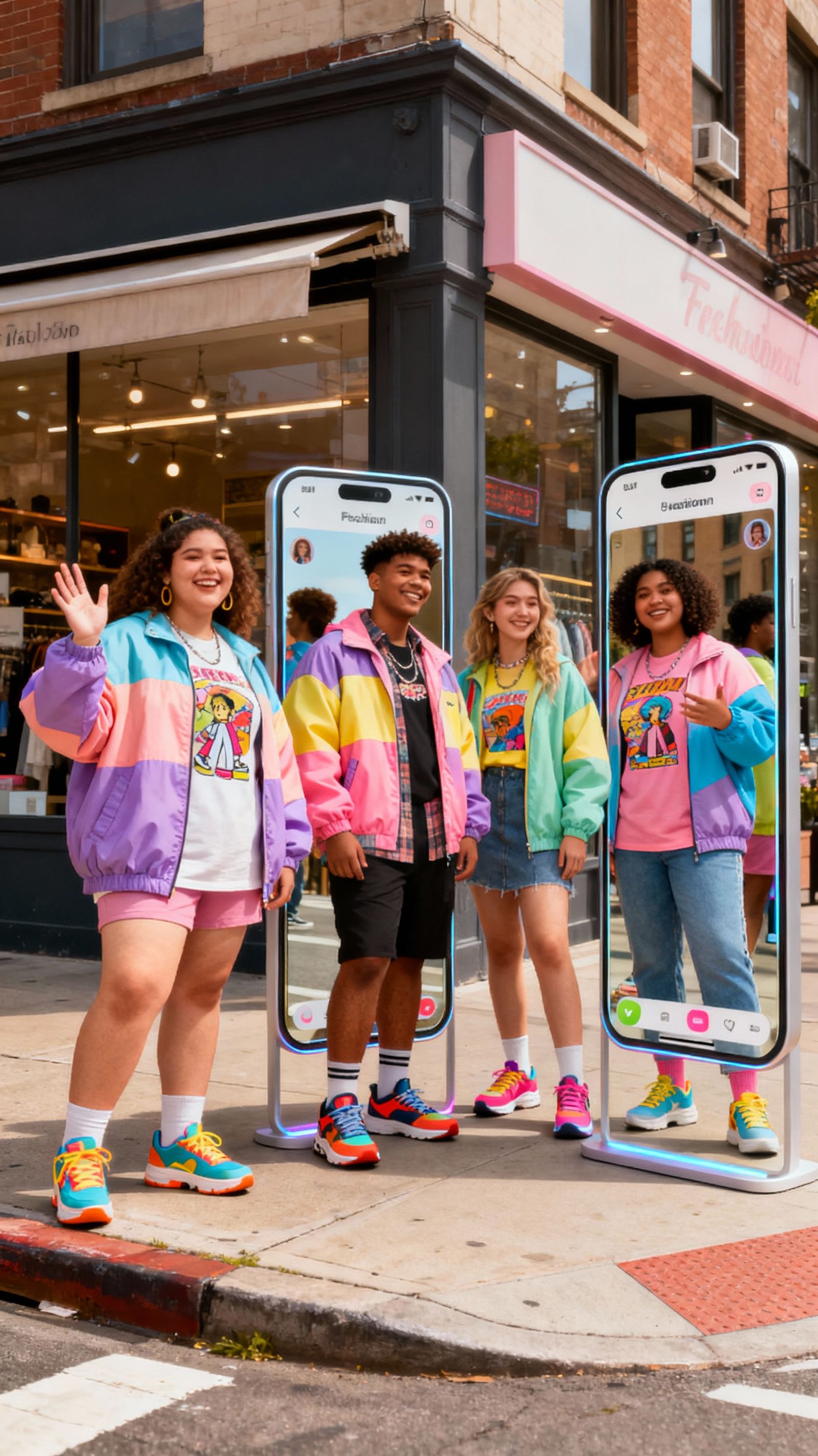What Your Swipe Speed Reveals: Inside an AI outfit planner
5 Ways Inclusive Size Discovery Ensures Perfect Fit


TL;DR
Inclusive size discovery gives shoppers accurate sizing by considering more than basic measurements. It reviews body proportions, fabric behavior, design variations, customer feedback, and real purchase fit outcomes to reduce returns and increase confidence. Brands using inclusive sizing in fashion create better experiences for every body type, and intelligent shopping agents like Glance strengthen this process by turning size selection into data backed guidance rather than guesswork.
For decades, sizing in fashion followed a narrow template. A small was treated as universal, a medium as standard, and a plus size option often felt like an afterthought.
Today, however, inclusive sizing in fashion is no longer a trend or marketing claim. It is a fundamental expectation shaped by lived experiences and growing awareness of body diversity. Consumers want clothes that fit their bodies, respect their proportions, and celebrate their identities. Brands want fewer returns, higher satisfaction, and deeper loyalty. Retailers want to remove the guessing game from online shopping.
This is where inclusive size discovery enters the conversation. It bridges the gap between body realities and industry sizing models by using advanced data and intelligent tools to help people find clothes that genuinely fit. Instead of making shoppers adapt to rigid charts, inclusive size discovery adapts to them.
But how does this process work? What exactly does it look at before recommending a size?
Let’s break down the five essential elements inclusive size discovery checks to ensure accurate sizing, consistency, and confidence.
5 Essential Elements of Inclusive Size Discovery

1. Body Measurements Beyond Basic Numbers
Traditional sizing relies on three inputs: bust, waist, and hips. While these measurements matter, they represent only a fraction of how clothing fits. Human bodies are more dimensional, and inclusive size discovery recognizes that.
Modern size recommendation systems collect detailed, voluntary inputs such as:
- Shoulder width
- Torso length
- Arm and thigh circumference
- Height and weight
- Body shape indicators like pear, straight, hourglass, or athletic
This creates a fuller understanding of how garments will sit, stretch, or drape on a person. By going beyond tape measure basics, inclusive size discovery provides recommendations that feel more realistic and more personal. It reduces reliance on numerical assumptions and creates space for natural diversity.
2. Brand to Brand and Product to Product Variations
One of the biggest frustrations in online shopping is inconsistency. A medium in one brand fits perfectly, but a medium from another brand feels two sizes smaller. Even within the same brand, jeans and dresses rarely follow identical standards.
Inclusive sizing in fashion acknowledges that there is no global sizing language. Instead of expecting consumers to navigate this chaos, inclusive size discovery studies it. Using product data, historical fit information, and garment construction details, it identifies brand specific patterns, such as:
- Does this brand run smaller or larger
- Are certain fabrics less forgiving
- Does this collection follow vanity sizing
- Does this style fit better for narrower or fuller hips
Rather than offering a one size fits all answer, it translates sizing logic across labels. For shoppers, it feels like having a style advisor who already understands the quirks and shortcuts of every store.
3. Real World Fit Behavior and Purchase Outcomes
Measuring clothes in a studio is one thing. Understanding how those clothes behave when worn is another. Inclusive size discovery incorporates real outcomes such as returns, reviews, and exchange requests to refine accuracy.
For example:
- If thousands of shoppers return a dress because it runs tight in the bust, the system learns from it
- If customers with similar measurements consistently size up for denim, future recommendations adjust
- If a fabric stretches over time, suggestions consider long term comfort, not just first wear fit
This gives inclusive sizing in fashion a feedback loop built on lived experiences instead of assumptions. Fit becomes dynamic, not static. Over time, recommendations grow smarter, more empathetic, and more precise.
4. Movement, Lifestyle, and Comfort Preferences
Two people with identical measurements may not want the same fit. One prefers relaxed silhouettes for comfort. Another chooses structured pieces for work. Someone who commutes daily wants to stretch. Someone who dresses for events prioritizes shape.
Inclusive size discovery recognizes that bodies do not dress in isolation. They move, sit, walk, dance, travel, and work. Clothing fit must support that reality. That is why these systems often ask qualitative inputs like:
- Do you prefer a snug or loose fit
- Do you want room around shoulders or hips
- Will the item be used for everyday wear or special occasions
This elevates the experience from measurement matching to personal styling. Instead of deciding what a shopper should wear, inclusive size discovery supports how they want to feel in their clothes.
5. Fabric Behavior, Stretch, and Construction Details
A size recommendation is incomplete without understanding the garment itself. Material science plays a major role in accurate sizing because different fabrics interact differently with bodies.
Cotton behaves differently than denim. Silk drapes but does not stretch. Polyester blends may loosen over time. Knitwear adapts. Tailored suiting follows structure. Inclusive size discovery analyzes these characteristics to guide smarter choices.
It considers elements like:
- Stretch percentage
- Thickness and breathability
- Pattern structure and seam placement
- Rise in pants and armhole depth in tops
- Zippers, buttons, and closures
Instead of telling shoppers what size they should wear, it clarifies how the clothing will behave. This prevents misunderstandings and enhances long term satisfaction.
Did you know? The global plus-size women’s clothing market size surpassed USD 324.23 billion in 2025 and is expected to reach around USD 532.79 billion by 2034, at a CAGR of about 5.7% from 2025–2034.
Intelligent Size Discovery Making Inclusive Size Discovery Easy?

As inclusive sizing in fashion evolves, shoppers expect more trust, more clarity, and more personalization. Intelligent agents like Glance are beginning to support this shift by helping users explore styles, understand fit, and make confident choices before checking out. When AI learns a shopper’s preferences, body characteristics, and fit history, size discovery moves from trial and error to intuitive guidance. The result is shopping that feels human, not transactional.
The global gender‑neutral clothing market is expected to reach about USD 5.6 billion by 2032 at an 11.5% CAGR, highlighting consistent double‑digit growth expectations across sources.
Importance of Accurate Size Discovery

Sizing is not a vanity issue. It affects mental well being, consumer confidence, and financial waste. In the United States, more than half of online fashion returns are driven by incorrect sizing, leading to landfill overflow and increased carbon emissions. Meanwhile, shoppers face emotional fatigue from sizing inconsistency.
Inclusive size discovery helps solve these problems by:
- Reducing returns and replacements
- Supporting body positivity and self trust
- Encouraging conscious purchases instead of impulse buying
- Strengthening transparency between brands and consumers
- Making online shopping feel personalized and welcoming
This is not just a commerce upgrade. It is a cultural shift toward respect and representation.
Conclusion
Inclusive sizing in fashion is not about offering more sizes. It is about offering more understanding. Bodies deserve clothes that respond to them, not clothes they must squeeze into. As data, design intelligence, and thoughtful digital tools evolve, inclusive size discovery becomes a powerful connector between individuality and style.
The fashion industry is finally recognizing what shoppers have always known: there is no standard body, only standard expectations. And those expectations are changing fast.
FAQs Related to Inclusive Size Discovery
1. How is inclusive size discovery different from traditional size charts?
Traditional charts offer generic measurements, while inclusive size discovery uses body data, fabric behavior, brand variations, and personal fit preferences to recommend sizes tailored to real shoppers—not averaged assumptions.
2. Does inclusive size discovery work across multiple brands and styles?
Yes. Advanced systems compare each brand’s sizing logic, fit history, and garment construction, ensuring accurate recommendations whether someone shops denim, activewear, formalwear, or relaxed silhouettes.
3. Can inclusive size discovery help reduce online return rates?
Absolutely. By predicting fit more accurately, understanding fabrics, and aligning with customer preferences, it minimizes guesswork—cutting size-related returns, operational costs, and shopper frustration.
4. Is body data used in inclusive sizing secure and private?
Responsible platforms anonymize data, seek consent, and follow strict privacy standards. Measurements are used solely for sizing—not sold, shared, or applied beyond the shopping experience.
5. Does inclusive size discovery support plus, petite, tall, and adaptive fashion?
Yes. Inclusive systems are designed to recognize diverse body proportions, mobility needs, and non-standard lengths, helping shoppers find clothing that fits comfortably, confidently, and consistently.






